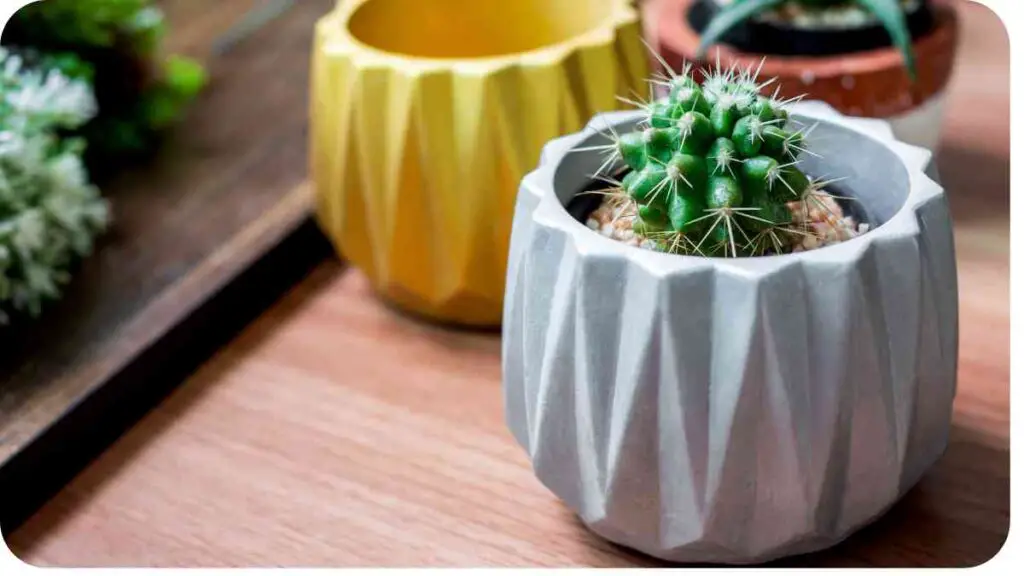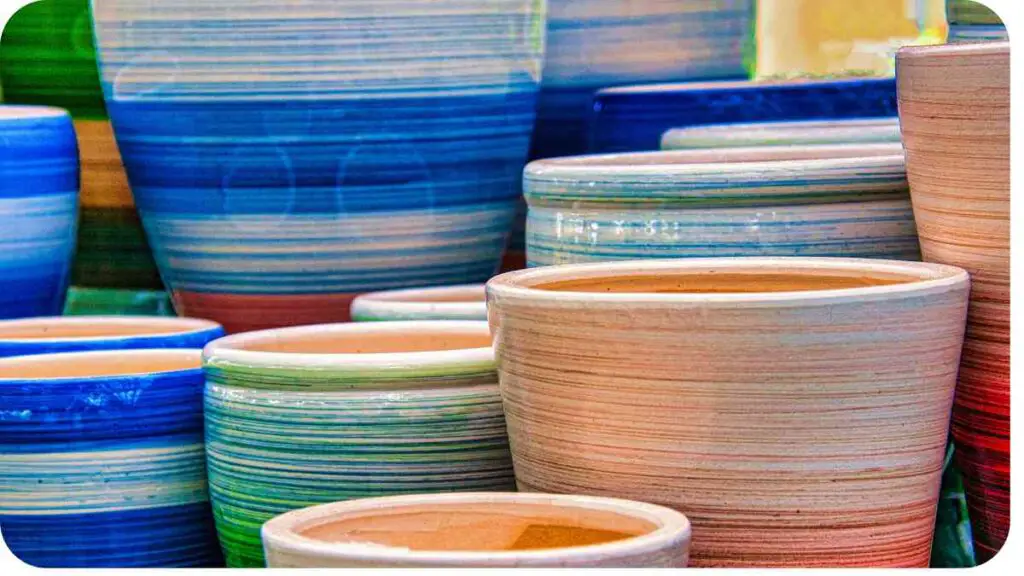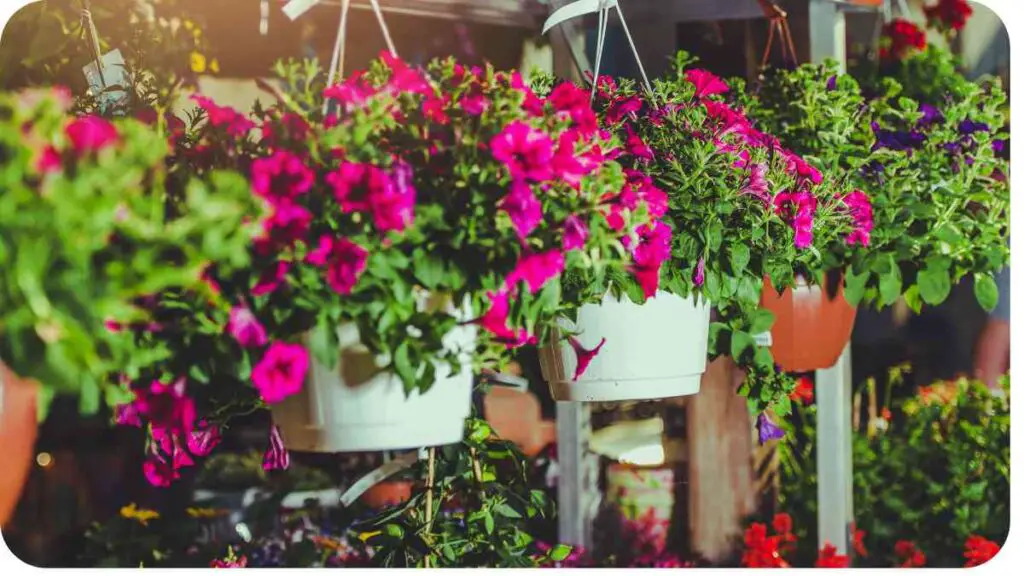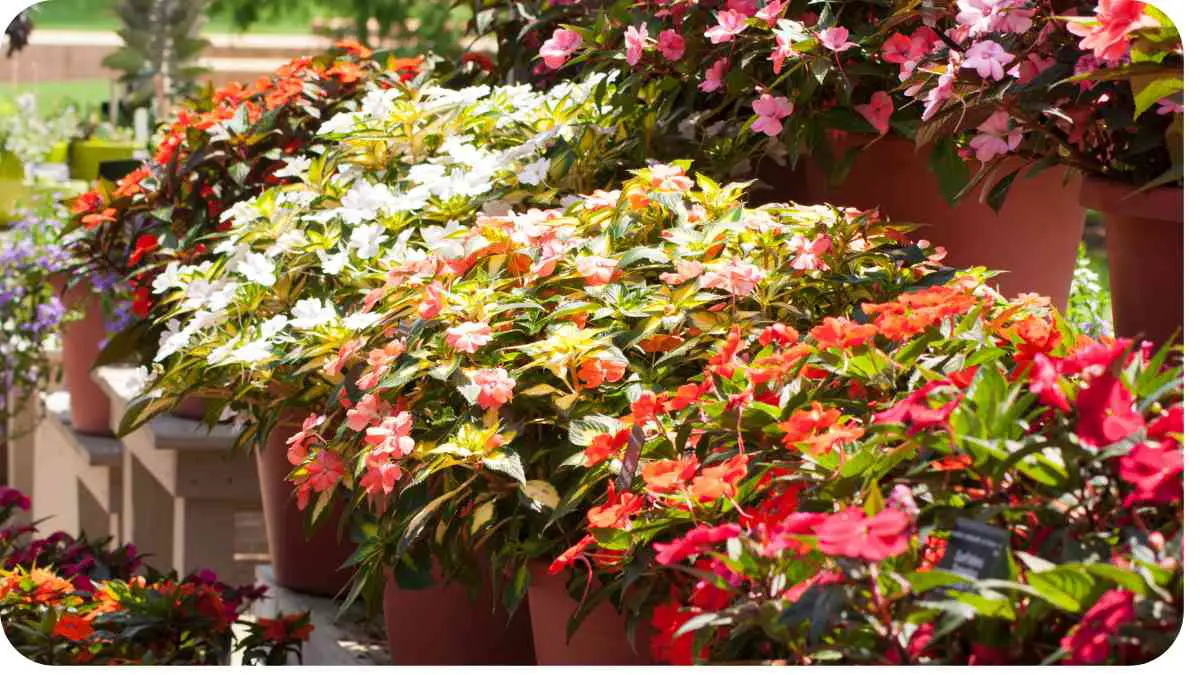Outdoor planters add beauty and charm to any garden or patio space. However, over time, these beloved fixtures can develop cracks or chips, detracting from their aesthetic appeal and functionality. In this comprehensive guide, we’ll explore effective methods for repairing cracked or chipped outdoor planters, restoring them to their former glory and prolonging their lifespan.
| Key Takeaways |
|---|
| 1. Assess the damage carefully before choosing a repair method. |
| 2. Use appropriate tools and materials for the specific type of damage and planter material. |
| 3. Follow the step-by-step repair process diligently to ensure a thorough and durable fix. |
| 4. Implement preventative measures to minimize the risk of future damage, such as proper drainage and handling with care. |
| 5. Seek additional resources and expert advice if needed to tackle more complex repairs or materials. |
2. Understanding Outdoor Planters

Before diving into repair techniques, it’s essential to understand the different types of outdoor planters available. Here’s a brief overview:
| Type of Planter | Description |
|---|---|
| Terracotta | Clay-based planters with a porous surface, prone to cracking in freezing temperatures. |
| Plastic | Lightweight and durable, but susceptible to cracking under extreme temperatures or physical impact. |
| Concrete | Sturdy and weather-resistant, but may develop cracks over time due to moisture and freeze-thaw cycles. |
| Ceramic | Elegant and versatile, but vulnerable to chipping if dropped or mishandled. |
Understanding the material of your planter is crucial for selecting the most appropriate repair method.
3. Common Causes of Cracks and Chips
Outdoor planters are exposed to various environmental factors that can lead to cracks or chips. Some common causes include:
- Freeze-Thaw Cycles: In regions with cold climates, water trapped inside the planter can expand when frozen, causing the material to crack.
- Physical Impact: Accidental bumps or knocks can result in chips or fractures, especially with fragile materials like ceramic or terracotta.
- Moisture Damage: Prolonged exposure to moisture, such as rain or overwatering, can weaken the structure of the planter and lead to cracking.
- UV Exposure: Intense sunlight can cause deterioration of certain materials over time, making them more prone to cracking or fading.
Understanding the root cause of the damage can help in selecting the most effective repair method.
To maintain healthy outdoor planters, it’s crucial to identify and treat fungal diseases in plants. Fungal infections can weaken planter structures, affecting plant health. Early detection and proper treatment ensure longevity and vibrant greenery.
4. Assessing the Damage
Before proceeding with repairs, it’s essential to assess the extent of the damage to your outdoor planter. Here are some steps to follow:
- Inspect the Planter: Carefully examine the entire surface of the planter to identify any cracks, chips, or other imperfections.
- Probe the Damage: Use a small tool or your finger to gently probe the cracks or chips to determine their depth and severity.
- Take Note of Surrounding Areas: Pay attention to any nearby cracks or weak spots that may indicate underlying structural issues.
- Consider the Material: Different materials may require different repair approaches, so take note of the material of your planter.
Once you have assessed the damage, you can proceed with selecting the appropriate repair method.
5. Tools and Materials Needed
Repairing cracked or chipped outdoor planters requires the right tools and materials. Here’s a list of what you’ll need:
Tools:
- Safety gloves
- Safety goggles
- Putty knife or trowel
- Sandpaper or abrasive pad
- Paintbrush or foam brush
Materials:
- Epoxy resin or putty
- Concrete patching compound
- Fiberglass cloth (for severe cracks)
- Cement paste (for chipped areas)
- Water (for mixing compounds)
- Paint or sealant (optional)
Having these tools and materials on hand will ensure a smooth and successful repair process.
Ensure your outdoor space remains serene with these DIY garden fountain maintenance tips. Clear water flow not only enhances aesthetics but also promotes a tranquil ambiance. Regular maintenance keeps fountains functional and adds charm to your garden.
6. Repair Methods for Cracked Planters

Cracked outdoor planters can be repaired using various methods, depending on the severity of the damage. Here are some effective techniques:
Sealing with Epoxy:
Epoxy resin is a versatile adhesive that can effectively seal cracks in a variety of materials. Here’s how to use it:
- Clean the Surface: Ensure the surface of the planter is clean and dry before applying the epoxy.
- Mix the Epoxy: Follow the manufacturer’s instructions to mix the epoxy resin and hardener.
- Apply the Epoxy: Use a putty knife or trowel to fill the crack with the epoxy mixture, smoothing it out evenly.
- Let it Cure: Allow the epoxy to cure according to the manufacturer’s recommendations before handling the planter.
Patching with Concrete:
For larger or more significant cracks, patching with concrete may be necessary. Here’s how to do it:
- Prepare the Surface: Clean the cracked area and remove any loose debris or particles.
- Mix the Concrete: Follow the instructions on the concrete patching compound to mix it to the desired consistency.
- Apply the Patch: Use a putty knife or trowel to fill the crack with the concrete mixture, pressing it firmly into place.
- Smooth and Shape: Once the patch is applied, use a damp cloth or sponge to smooth out any excess concrete and shape it to match the surrounding surface.
- Allow it to Cure: Let the patched area cure completely before handling the planter.
Using Fiberglass Cloth:
For severe cracks or structural damage, reinforcing with fiberglass cloth can provide added strength and stability. Here’s how:
- Prepare the Surface: Clean and dry the cracked area, ensuring it is free of any dirt or debris.
- Cut the Cloth: Cut a piece of fiberglass cloth slightly larger than the crack, ensuring it overlaps the surrounding surface.
- Apply Epoxy: Brush a layer of epoxy resin onto the cracked area, then place the fiberglass cloth over it.
- Add More Epoxy: Brush another layer of epoxy over the fiberglass cloth, ensuring it is fully saturated and adhered to the surface.
- Let it Cure: Allow the epoxy to cure completely before handling the planter.
Using these repair methods, you can effectively fix cracked outdoor planters and prevent further damage.
Cracks in outdoor planters can be unsightly, but with this step-by-step guide to repairing patio cracks, you can restore their integrity. Follow these simple steps to ensure a seamless repair and prolong the lifespan of your patio and planters.
7. Repair Methods for Chipped Planters

Chipped outdoor planters require a slightly different approach for repair. Here are some effective methods:
Filling with Epoxy Putty:
Epoxy putty is a versatile material that can be molded to fill in chipped areas and provide a seamless repair. Here’s how to use it:
- Clean the Surface: Ensure the chipped area is clean and dry before applying the epoxy putty.
- Prepare the Putty: Knead the epoxy putty according to the manufacturer’s instructions until it is fully mixed and pliable.
- Fill the Chip: Press the epoxy putty into the chipped area, molding it to match the shape of the surrounding surface.
- Smooth and Shape: Use a wet finger or tool to smooth out the putty and blend it seamlessly with the rest of the planter.
- Let it Cure: Allow the epoxy putty to cure completely before handling the planter.
Using Cement Paste:
Cement paste is an excellent option for filling in larger chips or areas of missing material. Here’s how to use it:
- Clean and Wet the Surface: Clean the chipped area and dampen it with water to help the cement paste adhere.
- Mix the Paste: Prepare the cement paste according to the manufacturer’s instructions until it reaches a thick, paste-like consistency.
- Fill the Chip: Use a putty knife or trowel to apply the cement paste to the chipped area, pressing it firmly into place.
- Smooth and Shape: Once the chip is filled, use a wet cloth or sponge to smooth out the surface and shape it to match the surrounding area.
- Let it Cure: Allow the cement paste to dry and cure completely before handling the planter.
By employing these repair methods, you can effectively restore chipped outdoor planters to their original condition.
Effective drainage is key to preventing damage to outdoor planters. Learn about common drainage issues and fixes for your garden to maintain healthy plants and sturdy containers. Proper drainage ensures water flows away from planters, preventing cracks and root rot.
8. Step-by-Step Repair Process
Now that we’ve covered the various repair methods, let’s outline the step-by-step process for repairing cracked or chipped outdoor planters:
- Assess the Damage: Determine the extent of the damage and select the appropriate repair method based on the material and severity of the cracks or chips.
- Gather Tools and Materials: Collect all the necessary tools and materials needed for the repair, including safety gear such as gloves and goggles.
- Prepare the Surface: Clean and dry the damaged area, removing any loose debris or particles.
- Apply the Repair Method: Depending on whether the planter is cracked or chipped, follow the specific repair method outlined earlier in the guide.
- Smooth and Shape: Use a wet cloth or sponge to smooth out the repaired area and shape it to match the surrounding surface.
- Allow it to Cure: Let the repair compound or epoxy cure completely according to the manufacturer’s recommendations before handling the planter.
- Optional Finishing Touches: If desired, paint or seal the repaired area to enhance its appearance and provide added protection against the elements.
- Monitor for Stability: After the repair is complete, monitor the planter for stability and make any necessary adjustments to ensure it remains intact.
By following these steps, you can effectively repair cracked or chipped outdoor planters and prolong their lifespan.
9. Tips for Preventing Future Damage
Prevention is key to maintaining the integrity of your outdoor planters and minimizing the risk of future cracks or chips. Here are some helpful tips:
- Choose Durable Materials: When selecting outdoor planters, opt for materials known for their durability and resistance to weathering, such as concrete or fiberglass.
- Provide Proper Drainage: Ensure your planters have adequate drainage holes to prevent water from pooling and causing damage.
- Protect from Extreme Temperatures: During cold weather, consider bringing sensitive planters indoors or providing insulation to prevent freezing and cracking.
- Handle with Care: When moving or handling planters, do so with caution to avoid accidental bumps or drops that could lead to damage.
- Regular Maintenance: Inspect your outdoor planters regularly for signs of wear or damage, and address any issues promptly to prevent further deterioration.
- Apply Sealant: Consider applying a protective sealant to outdoor planters to enhance their resistance to moisture and UV damage.
- Avoid Overwatering: Be mindful of watering practices to avoid saturating the soil and potentially weakening the planter material over time.
- Store Properly in Off-Seasons: If you live in an area with harsh winters, consider storing outdoor planters in a protected area during the off-season to prevent damage from snow and ice.
By implementing these preventative measures, you can help preserve the condition of your outdoor planters and enjoy them for years to come.
Protect your outdoor greenery by identifying and treating common tree diseases that may affect surrounding plants. Early intervention can prevent the spread of diseases, preserving the health and vitality of your garden. Stay vigilant to ensure a thriving outdoor environment.
10. Frequently Asked Questions (FAQs)
Q: Can I use regular glue to repair a cracked outdoor planter? A: While regular glue may provide a temporary fix, it is not suitable for long-term repairs and may not withstand outdoor conditions.
Q: How long does it take for epoxy to cure? A: The curing time for epoxy can vary depending on factors such as temperature and humidity, but it typically takes 24-48 hours to fully cure.
Q: Can I paint over the repaired area? A: Yes, once the repair has fully cured, you can paint over it using outdoor paint to blend it seamlessly with the rest of the planter.
Q: Will repaired outdoor planters be as strong as before? A: With proper repair techniques and materials, repaired outdoor planters can regain much of their strength and stability, but may not be as strong as they were originally.
11. Conclusion
Repairing cracked or chipped outdoor planters is a manageable task that can help extend the lifespan of these beloved garden fixtures. By following the methods outlined in this guide and taking preventative measures, you can effectively restore damaged planters and enjoy them for years to come.
Remember to assess the damage carefully, select the appropriate repair method, and take your time to ensure a thorough and durable repair. With a little effort and attention, your outdoor planters can continue to enhance your outdoor space for seasons to come.
Further Reading
- Gardening Know How: This comprehensive guide offers tips and techniques for fixing broken planters, including step-by-step instructions and advice on materials to use.
- HomeTalk: Learn how to repair cracked polyethylene planters with this informative article, which provides insights into specific repair methods and materials for this type of planter material.
- ABC Gardening Australia: Get expert advice from Mr. Fix-It on repairing pots and planters in this helpful guide from ABC Gardening Australia. Explore practical tips and techniques for restoring damaged planters to their former glory.
FAQs
Can I use regular glue to repair a cracked outdoor planter?
Regular glue may provide a temporary fix, but it is not suitable for long-term repairs and may not withstand outdoor conditions.
How long does it take for epoxy to cure?
The curing time for epoxy can vary depending on factors such as temperature and humidity, but it typically takes 24-48 hours to fully cure.
Can I paint over the repaired area?
Yes, once the repair has fully cured, you can paint over it using outdoor paint to blend it seamlessly with the rest of the planter.
Will repaired outdoor planters be as strong as before?
With proper repair techniques and materials, repaired outdoor planters can regain much of their strength and stability, but may not be as strong as they were originally.
What are some tips for preventing future damage to outdoor planters?
Some tips for preventing future damage include choosing durable materials, providing proper drainage, protecting from extreme temperatures, handling with care, regular maintenance, applying sealant, and storing properly in off-seasons.

Hi! My name is Hellen James, and I’m here to help you with your home-maintenance needs. Whether it’s building a better yard or just trying to fix a garden—I can show you how.


